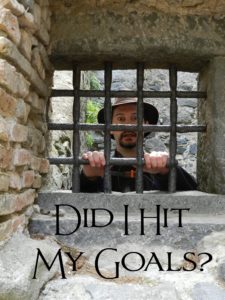Before we get started, I’d like to urge everyone reading this to consider donating to Pat Rothfuss’s wonderful charity drive Worldbuilders. Fans of Pat’s work (aren’t we all?) will likely know about this already, as he runs it every year. But 100% of the proceeds go to Heifer International, the charity that helps lift families in developing countries out of poverty permanently by giving them what they need to provide for their own livelihoods indefinitely. PLUS, for every $10 you donate, you have the chance to win some truly fabulous and geeky swag. Books, comics, games, and some really unique stuff you can’t win anywhere else. I’m proud to say that for the third year in a row I donated books to serve as prizes. Enter and you can win one of eight sets of both Unwilling Souls and Ungrateful God, as well as literally thousands of other prizes.
There are only a couple of days left. Donate here.
So, down to business. In preparation to write this post, I looked back to take stock of 2017 and see what sorts of lessons I could draw from what went well (I published a book! I placed a story in another anthology! I landed a spot in a book bundle!) and, more importantly, what didn’t (writing speed!). Some of these are lessons I already knew after a fashion. Some I’ve probably even related on this blog before. But that’s okay. If there’s one thing I’ve learned (and learned, and learned) about people, it’s that we can all use refresher courses in life lessons from time to time.
First off, in an unexpected twist early in the year, I got a kind of promotion at my day job. This was good in that regard, it put me in a position I think works well for me and which I enjoy. But as with all things, there are tradeoffs. But it did heap a bunch more responsibility onto my shoulders. So:
Lesson 1: Energy is a zero-sum game. There are only 24 hours in a day, and there is only so much that can be done in those 24 hours. When you push harder in one aspect of your life, you have to ease up in another area or you’ll burn yourself out fast. Suffice it to say, my writing speed suffered this year, largely as a result of more of my energy and focus being burned at my day job.
I’d originally had a deadline for Book 3 set with my editor that was based on far more optimistic projections of my writing speed than wound up happening. In the past, deadlines have worked wonders for my editing speed, even if (see Lesson 1) I always paid for it later. Well …
Lesson 2: Deadlines affect different parts of the writing process in different ways. Turns out that what works well for my editing process has the exact opposite effect on my writing process. My creativity well just dries right up. After much waffling, I wound up pushing the deadline back, and it was amazing how quickly the font of creativity sprang back to life. Things are going much better now.
So right around the time I was getting set to publish my second novel (shameless link for holiday shopping), I had the chance to submit to another anthology in the series I’ve had such good fortune with. There was no way, with my edits to Ungrateful God, that I was going to have time to write a new story from scratch. I tried anyway, but no luck. Which leads me to …
Lesson 3: Turn down opportunities only after careful consideration. Don’t be afraid to think outside the box. The anthology’s theme was sea monsters, and after some thought and speaking with the editor, I was able to modify an existing story of mine (a longtime favorite, tragically unplaced) to fit closely enough to submit. And it got in! So be on the lookout for Undercurrents: An Anthology of What Lies Beneath next year, featuring my story “A Marsh Called Solitude.”
All that being said, too much is too much. So the corollary to the above is …
Lesson 4: Know when to say no. The simple fact is (and this relates again back to Lesson 1) that if you take on too much at once, you’ll end up doing nothing well. This limit is different for everyone, and you’ll probably have to experiment, as I have, to find where it lies, but once you have learned, you’d do well to heed it.
Let’s talk some more about those opportunities. They come in all shapes and sizes, often when you least expect it. But they can only reach you if you’re listening.
Lesson 5: Keep the lines of communication open. We’re writers. We like to retreat into our own little worlds where we reign supreme. I get it. But I was able to place Unwilling Souls into a really fantastic book bundle this past summer, and it was all because I was keeping up well enough with my social media to notice when the request for submissions came along. Turned out it was a great fit, and it netted me an unprecedented number of sales. That in turn provided a nice bump in sales for Ungrateful God as well.
But not every opportunity will just fall into your lap, even if you’re paying attention. Most will, in fact, require chasing. Which brings me to the final lesson of the year.
Lesson 6: Don’t wait. Go after it. One thing my work needs badly is more reviews. The reviews I get are almost all great, I just don’t get enough of them. The internet is filled with blog reviewers that will turn around an honest review in return for a complimentary e-copy of a book. But unless you are already well-known enough that you probably don’t need the help, they probably won’t come looking for you. I received a lovely review for Unwilling Souls by Nerd Girl, as well as a great Ungrateful God review from The Novel Girl Reads, and I’m just getting warmed up soliciting reviews. My goal is to have a nice list of reviewers to contact by the time Book 3 is ready to go. But I’ve got to set aside the time (and the energy) to get that done.
I’m willing to bet a lot of you have learned these lessons before, just as I have. But as I said, some of the best lessons are the ones we need reminders of from time to time. Happy writing, happy holidays, and happy New Year. Catch you in 2018!





